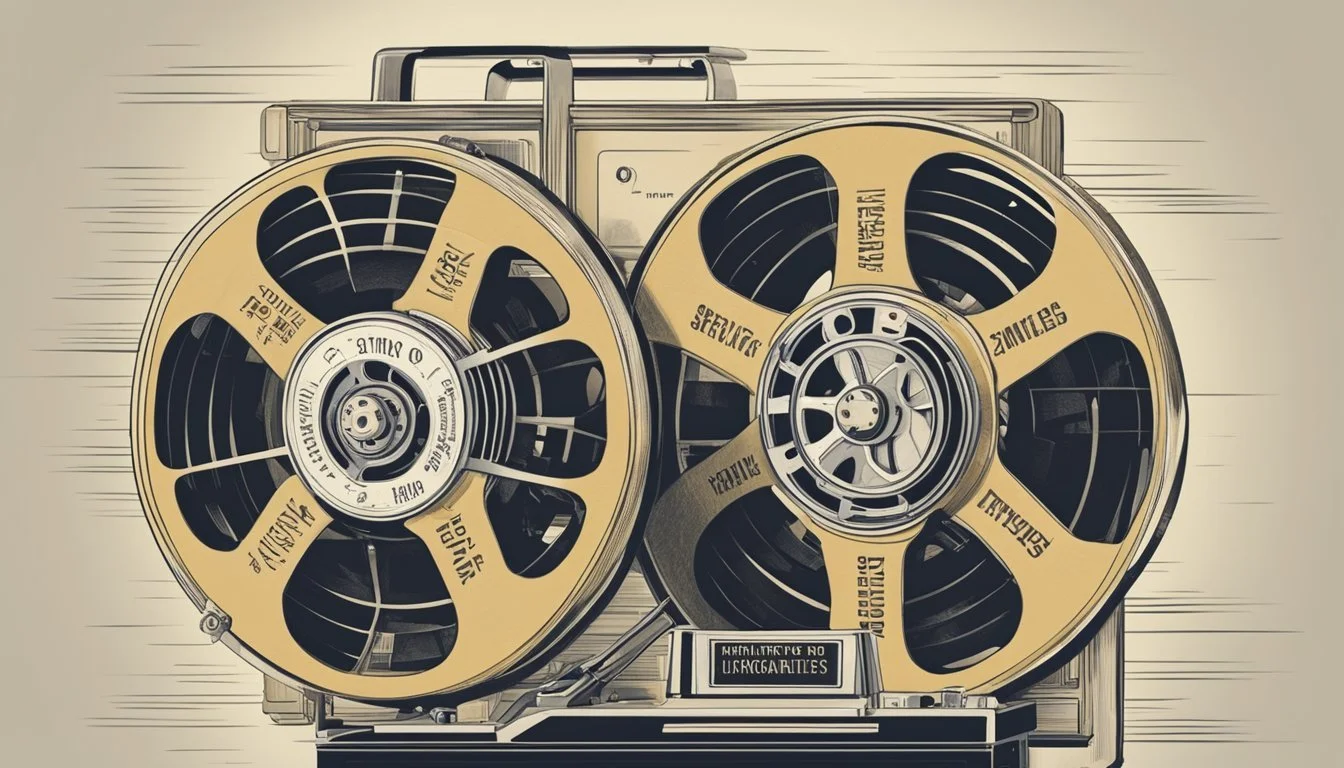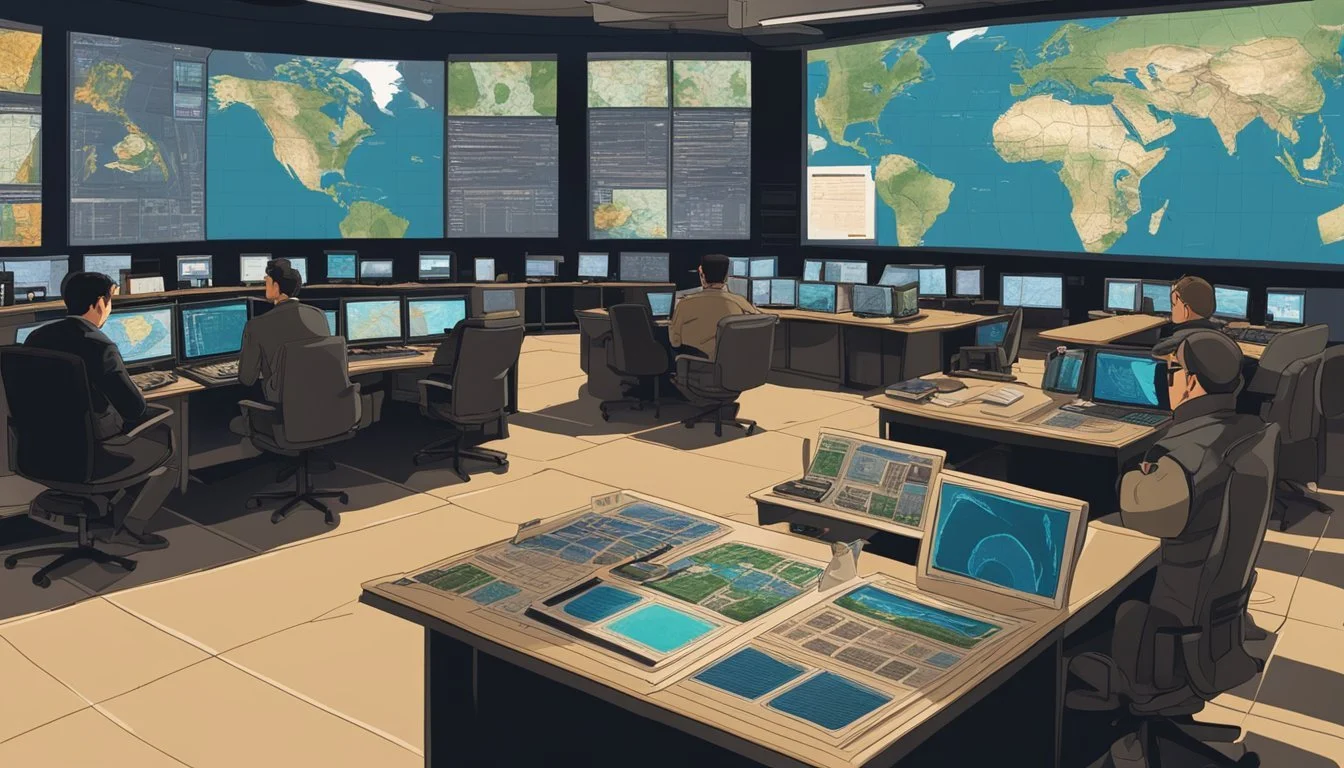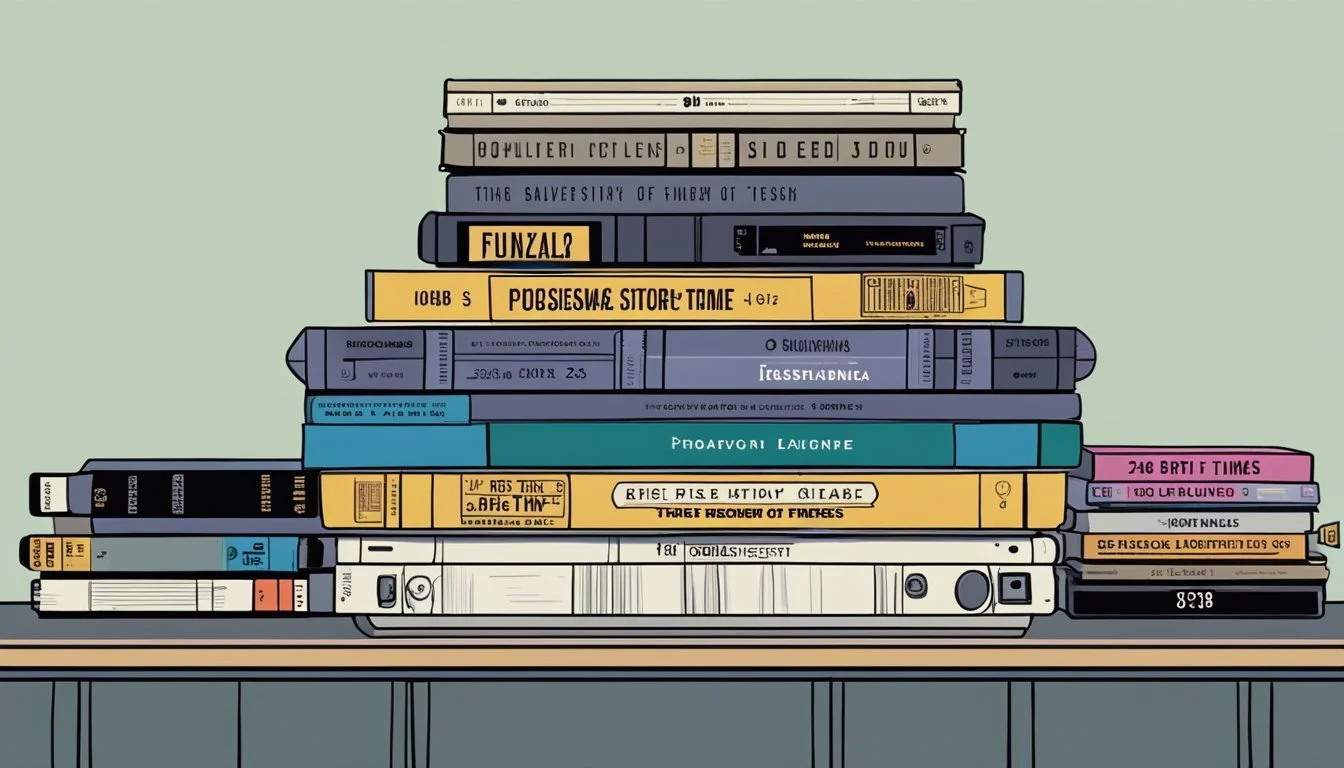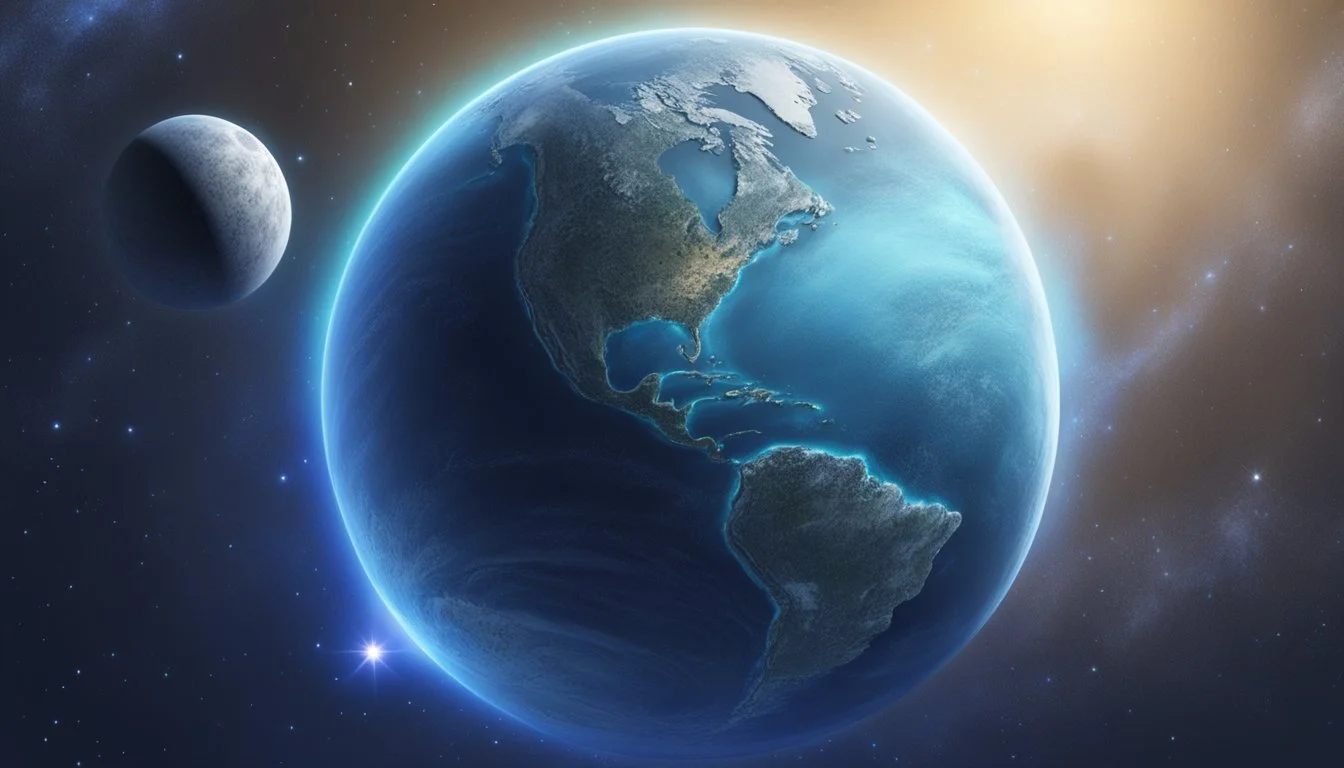Top Documentaries of 1993
Must-Watch Films That Defined a Year
1993 was a pivotal year for documentary filmmaking, producing several groundbreaking and influential works that continue to resonate with audiences today. These documentaries explored a wide range of subjects, from political campaigns to social issues, and showcased innovative storytelling techniques that pushed the boundaries of the genre.
The best documentaries of 1993 offered audiences unique insights into real-world events and complex human experiences, setting new standards for non-fiction filmmaking. They captured important moments in history, shed light on overlooked stories, and challenged viewers to think critically about the world around them. Many of these films have since become classics in their own right, cementing 1993 as a remarkable year for documentary cinema.
1) Schindler's List (1993)
Schindler's List is Steven Spielberg's powerful historical drama depicting the Holocaust. The film tells the true story of Oskar Schindler, a German businessman who saved the lives of over a thousand Jewish refugees during World War II.
Shot primarily in black and white, the film stars Liam Neeson as Schindler, with Ralph Fiennes portraying the ruthless SS officer Amon Göth. The movie's stark visual style and haunting score by John Williams enhance its emotional impact.
Schindler's List received widespread critical acclaim for its unflinching portrayal of the atrocities of the Holocaust. It won seven Academy Awards, including Best Picture and Best Director for Spielberg.
The film's success at the box office demonstrated that audiences were willing to engage with serious historical subject matter. It grossed over $320 million worldwide and became one of the highest-grossing films of 1993.
Schindler's List is widely regarded as one of the greatest films ever made. It continues to be used as an educational tool to teach about the Holocaust and its impact on history.
2) The War Room (1993)
"The War Room" offers an intimate look at Bill Clinton's 1992 presidential campaign. Directed by Chris Hegedus and D. A. Pennebaker, this documentary takes viewers behind the scenes of a groundbreaking political operation.
The film focuses on campaign strategists James Carville and George Stephanopoulos. It captures their daily efforts to shape Clinton's message and respond to challenges during the election.
"The War Room" reveals the fast-paced, high-pressure environment of modern campaigning. It showcases the innovative tactics that helped Clinton secure victory against incumbent George H. W. Bush.
The documentary received critical acclaim for its unfiltered access to key campaign moments. It earned an Academy Award nomination for Best Documentary Feature.
"The War Room" has become a touchstone for political documentaries. It offers valuable insights into campaign strategy and the personalities who drive presidential races.
3) Visions of Light
Visions of Light (1992) offers a captivating exploration of cinematography in film history. This documentary showcases the artistry behind the camera through interviews with renowned cinematographers and filmmakers.
The film features clips from over 125 movies, spanning from the silent era to the New Wave. It highlights iconic shots and sequences that have shaped cinematic visual language over the decades.
Viewers gain insight into the techniques and styles of master cinematographers like Gregg Toland, Conrad Hall, and Haskell Wexler. The documentary examines their collaborations with directors and the creation of memorable images using light and shadow.
Produced by the American Film Institute and NHK/Japan Broadcasting Corp., Visions of Light stands as a testament to the power of visual storytelling in cinema. It provides a unique perspective on how cinematography has evolved and influenced filmmaking.
The documentary received critical acclaim for its comprehensive look at this crucial aspect of filmmaking. It serves as both an educational resource and a celebration of the art form.
More information on Visions of Light
4) The Wonderful Horrible Life of Leni Riefenstahl
This 1993 documentary explores the controversial life and career of Leni Riefenstahl, the German filmmaker known for her Nazi propaganda films. Directed by Ray Müller, the film provides an in-depth look at Riefenstahl's work and her complex legacy.
The documentary features extensive interviews with Riefenstahl herself, then 91 years old. She discusses her most famous works, including "Triumph of the Will" (1935) and "Olympia" (1938), which documented the 1936 Berlin Olympics.
Müller's film examines Riefenstahl's artistic talents while also scrutinizing her involvement with the Nazi regime. The director challenges her claims of political naivety and questions her about her relationship with Adolf Hitler.
The documentary showcases Riefenstahl's technical innovations in filmmaking and her later work as a photographer. It also addresses the ethical debates surrounding her career and the ongoing controversies about her role in Nazi propaganda.
"The Wonderful Horrible Life of Leni Riefenstahl" offers a nuanced portrait of a talented yet polarizing figure in film history. It remains a significant work for its exploration of art, politics, and personal responsibility.
5) Baraka (1993)
Baraka stands out as a unique and visually stunning documentary from 1993. Directed by Ron Fricke, the film takes viewers on a wordless journey across six continents, exploring human cultures and natural wonders.
Filmed in 70mm, Baraka showcases breathtaking cinematography and time-lapse sequences. It captures diverse scenes ranging from religious rituals to industrial landscapes, offering a meditation on humanity's relationship with the world.
The film's title comes from a Sufi word meaning "blessing" or "the breath of life." Baraka's innovative approach eschews narration, relying instead on powerful imagery and an evocative musical score to convey its message.
Fricke, who previously worked as cinematographer on Koyaanisqatsi, brings his signature style to Baraka. The film's non-narrative structure allows viewers to form their own interpretations of the connections between different cultures and environments.
Baraka received critical acclaim for its visual artistry and thought-provoking content. It remains a influential work in the realm of non-narrative documentaries, inspiring filmmakers and audiences alike.
6) Atanarjuat: The Fast Runner (2001)
Atanarjuat: The Fast Runner is a groundbreaking Canadian film directed by Inuit filmmaker Zacharias Kunuk. Set in the ancient Arctic, it retells an Inuit legend passed down through generations of oral tradition.
The film is notable for being the first feature entirely written, directed, and acted in the Inuktitut language. It explores universal themes of love, jealousy, family, and power through its storytelling.
Atanarjuat garnered critical acclaim for its stunning cinematography, capturing the harsh beauty of the Arctic landscape. The authentic portrayal of Inuit culture and traditions adds depth to the narrative.
The film's impact extends beyond its artistic merits. It has been recognized as a significant work of Indigenous cinema, helping to preserve and share Inuit cultural heritage with a global audience.
Atanarjuat: The Fast Runner has received numerous accolades, including the Caméra d'Or at the 2001 Cannes Film Festival. It continues to be celebrated as one of the greatest Canadian films ever made.
More information on Atanarjuat: The Fast Runner
7) Manufacturing Consent: Noam Chomsky and the Media (1992)
This documentary explores the political ideas of renowned linguist and activist Noam Chomsky. It condenses Chomsky's book of the same name into an accessible film format.
The movie examines Chomsky's critiques of mass media and its role in shaping public opinion. It uses creative visual techniques to illustrate complex concepts about media manipulation and propaganda.
Filmmakers Mark Achbar and Peter Wintonick present Chomsky's arguments through interviews, archival footage, and animations. They cover topics like corporate influence on news and the manufacturing of public consent.
The documentary received praise for making Chomsky's ideas engaging to a wider audience. It offers an in-depth look at media analysis and political economy.
"Manufacturing Consent" stands out as an informative and thought-provoking film about media's impact on society. It challenges viewers to critically examine the information they consume.
8) A Brief History of Time (1991)
"A Brief History of Time" is a documentary film directed by Errol Morris that explores the life and work of renowned physicist Stephen Hawking. The film shares its title with Hawking's bestselling book, but goes beyond just explaining cosmology.
The documentary interweaves Hawking's groundbreaking theories on the universe with his personal story. It features interviews with Hawking himself, as well as family members and colleagues, providing insight into his brilliant mind and resilient spirit.
Morris skillfully presents complex scientific concepts in an accessible manner. The film covers topics such as the Big Bang, black holes, and the nature of time, making them understandable to a general audience.
"A Brief History of Time" received critical acclaim for its engaging portrayal of Hawking and his ideas. It won several awards, including the Grand Jury Prize for Documentary at the Sundance Film Festival.
The documentary stands out for its ability to balance scientific exploration with human interest. It offers viewers a unique glimpse into the life of one of the greatest scientific minds of the 20th century.
9) The Restless Conscience (1992)
"The Restless Conscience: Resistance to Hitler Within Germany 1933-1945" is a compelling documentary directed by Hava Kohav Beller. The film explores the anti-Nazi resistance movement within Germany during Hitler's reign.
The documentary sheds light on the moral dilemmas faced by German citizens who opposed the Nazi regime. It focuses on individuals whose consciences conflicted with the prevailing political climate.
Beller's work examines over 20 attempts to overthrow Hitler, culminating in the 1944 plot that led to the conviction of at least 170 German citizens. The film provides a nuanced perspective on this lesser-known aspect of World War II history.
"The Restless Conscience" received critical acclaim and was nominated for an Academy Award for Best Documentary Feature in 1992. It offers viewers a thought-provoking look at resistance and moral courage in the face of totalitarianism.
The documentary combines historical footage with interviews to create a powerful narrative. It serves as an important reminder of the complexity of human choices during times of political extremism.
10) The Blue Planet
The Blue Planet (2001) is a groundbreaking nature documentary series that explores the world's oceans. Narrated by David Attenborough, this eight-episode series provides viewers with an unprecedented look at marine life.
Each episode focuses on a different aspect of ocean ecosystems. From coastal shallows to the deep sea, the series showcases a wide array of aquatic environments and the creatures that inhabit them.
The Blue Planet features stunning underwater cinematography, capturing rarely seen marine species and behaviors. Advanced filming techniques allowed the crew to document underwater phenomena that had never been recorded before.
The series was a collaborative effort between the BBC and Discovery Channel. It took nearly five years to produce, with filming locations spanning the globe. The Blue Planet's success paved the way for future oceanic documentary series.
More information on The Blue Planet
Influential Filmmakers of 1993
1993 saw several documentary filmmakers push boundaries and set new standards in the genre. Their innovative approaches and compelling storytelling techniques left a lasting impact on the field.
Pioneering Techniques
Jennie Livingston's "Paris Is Burning" stood out for its intimate portrayal of New York City's drag ball culture. Livingston's fly-on-the-wall approach captured the raw energy and authenticity of the scene. The film's exploration of race, gender, and sexuality was groundbreaking for its time.
Steve James, Frederick Marx, and Peter Gilbert's "Hoop Dreams" redefined long-form documentary storytelling. Their five-year project following two aspiring basketball players showcased the power of extended observation in capturing complex social issues.
Errol Morris continued to innovate with "The Dark Wind," employing his signature interview style and reenactments to blur the lines between fiction and reality.
Impact on Future Documentaries
These filmmakers' work in 1993 influenced documentary techniques for years to come. Livingston's approach to subcultures inspired future filmmakers to explore marginalized communities with empathy and depth.
"Hoop Dreams" set a new standard for longitudinal documentaries, encouraging filmmakers to commit to long-term projects for richer storytelling. Its success also opened doors for more diverse voices and subjects in mainstream documentary filmmaking.
Morris's stylistic choices in "The Dark Wind" further legitimized the use of dramatic reenactments in documentaries, a technique that became increasingly common in the following decades.
Cultural and Historical Context
1993 marked a pivotal year in global affairs and societal shifts. Documentaries produced during this time reflected the changing world and captured key events that shaped the cultural landscape.
Global Events of 1993
The year 1993 saw significant political and cultural milestones. The European Union was established, ushering in a new era of cooperation among European nations. In the United States, Bill Clinton took office as president, bringing a fresh perspective to American politics.
The Oslo Accords between Israel and Palestine were signed, offering hope for peace in the Middle East. South Africa made strides towards ending apartheid, setting the stage for Nelson Mandela's presidency the following year.
These events provided rich material for documentary filmmakers to explore and analyze.
Societal Trends Reflected in Documentaries
Documentaries in 1993 tackled a range of social issues and cultural phenomena. The rise of hip-hop culture and its impact on society became a popular subject for filmmakers. Environmental concerns gained traction, with documentaries focusing on climate change and conservation efforts.
The AIDS crisis remained a pressing issue, inspiring filmmakers to create powerful works that raised awareness and challenged stigma. Gender equality and women's rights also emerged as prominent themes in documentary filmmaking.
Technology's growing influence on daily life began to feature in documentaries, foreshadowing the digital revolution that would soon transform society.





